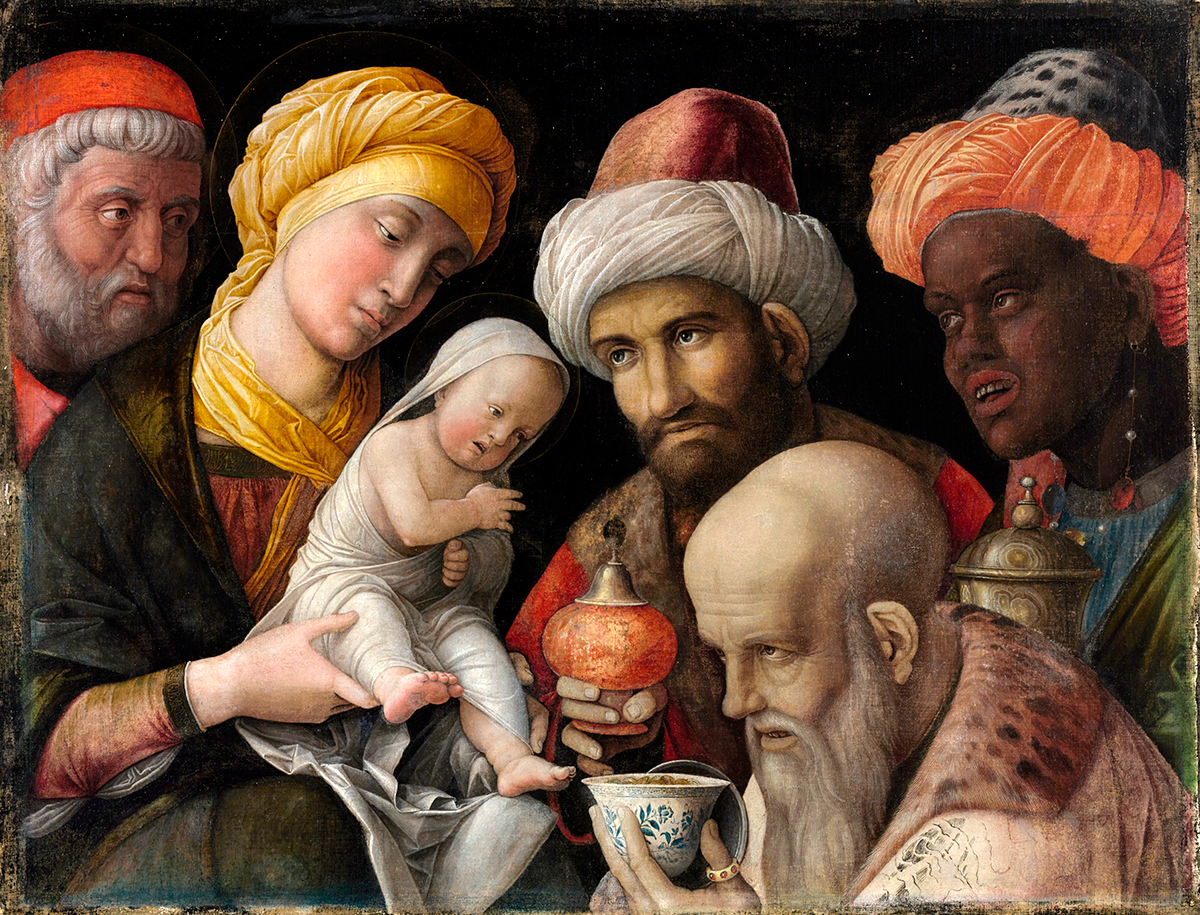The Getty’s collection of sacred art is not to be missed.Located on top of a hill in the Brentwood district of Los Angeles, the J. Paul Getty Museum hosts a vast collection of paintings, drawings, manuscripts and artifacts from Europe as well as more contemporary pieces from all over the planet. It can be hard to navigate such a far reaching collection, so here is a short guide to the pieces of religious art that should not be missed by Catholic visitors.
1. Gentile Da Fabriano, The Coronation of The Virgin (1420) 14th-century painter Gentile da Fabriano was one of the most important exponents of International Gothic style, a method characterized by intense colors, elongated figures and smooth lines. In this panel painting from about 1420, da Fabriano exhibits fine craftsmanship in the use of gold leaf and intricate patterns. This results in a solemn tone as Christ is depicted placing a gold crown upon Mary’s head. Originally this panel used to be double-sided and was used during public parades that celebrated the Virgin Mary in Italy.

2. Paolo Veronese, The Baptism Of Christ (1580-1588)
This painting by Renaissance painter Paolo Veronese was inspired by a work of the Venetian painter Tintoretto on the same subject. Human subjects are distributed symmetrically around the luminous central figure of the white dove. Christ is depicted as he leans his upper body forward to meet the blessing of St. John the Baptist. There is a sense of elegance and harmony in both figures that combined with the vibrant light becomes a symbol of divinity. Experts believe that most of the work was carried out by Veronese himself, but the putti angels in the sky were probably completed by workshop assistants.

3. Lorenzo Lotto, Madonna and Child With Two Donors (1525-1530)
Lorenzo Lotto was a painter active during the High Renaissance period (1480-1557) famous for his work on altarpieces and religious subjects. In this painting, he divides the visual composition in two: the first space contains the Virgin and Christ enclosed by drapery, and a second space features kneeling donors against an open window.

4. Andre Mantegna, Adoration of the Magi (1431-1506)
A key exponent of Italian Renaissance and avid student of archaeology, Andrea Mantegna was famous for his monumental style of painting and his experiments with perspective. In this painting of the Adoration of the Magi, he compresses subjects in a shallow space, a technique he had observed in ancient Roman reliefs. Thanks to this set-up and the use of sharply defined pictorial details, he focuses the viewer’s attention on the kings’ adoration of Christ. Mantegna chooses to paint Jesus, Mary and Joseph in simple attire compared with the elegance of the three Magi. Yet, it is the geometrical elegance of their faces that makes them the central subjects of the painting.

5. Giacomo Manzù, Seated Cardinal (Cardinale Seduto) (1975 -1977)
It’s not just art from the past that draws Catholic visitors to the Getty. One of the most interesting contemporary pieces featuring a religious subject is currently kept on the terrace of the South Gallery. “Cardinale Seduto” (seated cardinal) was completed in 1957 by Giacomo Manzù, one of the key exponents of 20th-century Italian sculpture. Born Giacomo Manzoni in Bergamo, Italy, in 1909, he dedicated years of his production to the figure of “The Pope Flanked by Two Cardinals,” something he had observed first-hand in Rome in 1930s when visiting St. Peter’s Basilica. In this work, he presents a cardinal sitting in a solemn manner, with stylized clothing and a mask-like face. The whole structure is arranged by Manzù to present the cardinal as the same timeless figure he observed in St. Peter’s Cathedral. The only detail that shows the subject as a human being, rather than a mythological creature, is a tiny hand emerging from behind the vest.

6. James Ensor, Christ’s Entry Into Brussels (1888)
Probably one of the most famous modern works featuring a religious subject, “Christ’s Entry Into Brussels” is an encrypted message that Belgian painter James Ensor wanted to give to his contemporaries. Here, Christ is shown at the center of the painting as an isolated, visionary figure surrounded by a sea of people too interested in social status and self-image to realize who he is. The use of masks, a popular practice during the celebration of Mardi Gras, further builds a grotesque undertone. By featuring some of the most important public figures of his time in the crowd, Ensor attempted to send a strong message of social critique with this painting.


